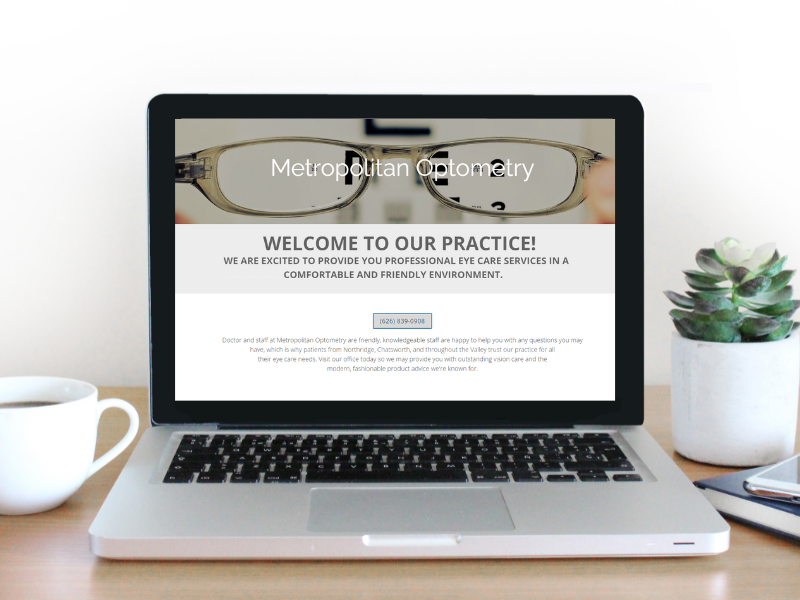Myopia (Childhood): Can it be Cured?
Childhood myopia, a growing concern affecting more children than ever, is characterized by blurry vision for distant objects. Myopia occurs when a child's eyeball is too long, or the cornea is too steeply curved, causing light rays to fall short of the retina. Genetic and environmental factors, such as limited outdoor time and increased screen use, can trigger myopia development. While there's no cure for myopia, early detection, and proper management through strategies like specially designed eyewear and lifestyle adjustments can help slow its progression and protect children's long-term eye health. Metropolitan Optometry offers comprehensive eye exams and personalized myopia control strategies to address this issue.
Childhood Myopia: At a Glance
Childhood myopia is increasing in prevalence, caused by genetic and environmental factors like limited outdoor time and increased screen use.
Early detection and proper management can help slow myopia progression in children.
Symptoms include blurred, distant vision, squinting, frequent headaches, and holding objects close to the face.
Effective management strategies include specially designed eyeglasses, contact lenses, Corneal Refractive Therapy (CRT) lenses, and lifestyle changes.
Untreated myopia can lead to serious eye conditions, making early intervention essential for long-term eye health.
Childhood myopia is on the rise, affecting more kids than ever before. This increasing prevalence concerns parents about their children's eye health and vision. While there's no cure for myopia, early detection and proper management can help slow its progression.
At Metropolitan Optometry, we offer comprehensive eye exams and personalized myopia control strategies for children.
What is Childhood Myopia (Nearsightedness)?
Childhood myopia, also known as nearsightedness, is a prevalent vision issue that affects a significant number of children globally. This condition is characterized by a visual discrepancy where objects that are far away seem fuzzy or indistinct, while those that are near or close-up are seen with clarity and precision.
This vision anomaly is primarily caused by an elongation of the eyeball or a steep curvature of the cornea, the transparent front part of the eye that refracts light. In a normally functioning eye, light enters and is accurately focused on the retina (the light-sensitive tissue at the back of the eye) to form a sharp image. However, in the case of myopia, due to the elongated eyeball or steeply curved cornea, the light rays are focused in front of the retina, resulting in a blurred image of distant objects.
Myopia is not merely a minor inconvenience; it can substantially affect a child's life, impacting their performance in school and other activities. Additionally, it can raise the risk of specific eye diseases in adulthood, like retinal detachment, which can result in vision loss if not addressed quickly.
Common Causes of Myopia in Children
Children may develop myopia due to both genetic and environmental factors. Limited outdoor time and increased screen time are significant contributors to myopia. Increased screen time and reading can strain the eyes, whereas outdoor activities can provide exercise and healthy, natural light. It also gives children the opportunity to view objects at varying distances.
Early detection and management are essential in preventing the progression of myopia in children.
Symptoms of Childhood Myopia
Childhood myopia is often accompanied by a variety of symptoms that may not be immediately recognized as signs of myopia. One of the most common signs is, of course, blurred vision, especially when viewing objects that are far away. This can lead to difficulties in school, as the child may struggle to see the board clearly.
In addition to blurred distance vision, your child may display a few other behaviors that can indicate the presence of myopia.
Squinting, for instance, is a common symptom. This is because squinting can temporarily improve the focus and clarity of an image, making distant objects appear more defined. Your child may also frequently frown, a possible sign of concentration, as they try to bring blurry objects into focus.
Headaches are another symptom of myopia. They are often the result of eye strain as the child's eyes work harder to focus on distant objects.
Can Childhood Myopia Be Prevented or Cured?
While there is currently no cure for myopia, there are several strategies that can be employed to slow its progression and protect a child's vision:
Exposure to natural light and spending time outdoors has been shown in several studies to slow the progression of myopia in children.
Balancing screen time with outdoor activities can also help limit myopia development.
Medical interventions are also available to help manage myopia.
Specially designed contact lenses and glasses can alter how light enters the eye and focuses on the retina, potentially slowing eye growth and limiting myopia progression.
3 Effective Myopia Management Strategies
1. Eyeglasses and Contact Lenses
Specially designed eyeglasses and contact lenses can help control myopia progression in children. These optical solutions work by altering how light focuses on the retina, potentially slowing eye growth and limiting myopia development. Regular eye exams are essential to monitor changes and adjust prescriptions as needed.
2. Corneal Refractive Therapy (CRT) Lenses
CRT lenses, worn overnight, temporarily reshape the cornea to provide normal vision during the day without glasses or contacts. This non-invasive method can be particularly effective for managing childhood myopia and may help slow its progression.
3. Lifestyle and Environmental Factors
Increasing outdoor time and natural light exposure can help reduce the risk of myopia development. Balancing screen time and encouraging regular breaks during work activities are also beneficial. These lifestyle changes, combined with proper eye care, can contribute to better overall eye health and potentially slow myopia progression in children.
Long-term Risks of Untreated Myopia
Untreated myopia can lead to serious eye conditions like cataracts, glaucoma, and optic neuropathy, all potentially causing vision loss. These complications often arise from the progressive nature of myopia, where the eye's shape continues to change over time. Early detection and management of myopia are vital, allowing for treatments that can slow myopia progression and reduce the risk of more severe eye conditions.
Myopia Management at Metropolitan Optometry
At Metropolitan Optometry, we are experienced optometrists passionate about your children's eye health. Our myopia management offers numerous benefits, including:
Slows the progression of myopia in children.
Reduces the risk of future eye diseases associated with high myopia.
Provides personalized treatment options like multifocal glasses and Corneal Refractive Therapy, or CRT.
Improves quality of life, including confidence and better academic performance.
To learn more about myopia management in children, reach out to us at 626-839-0908. You can also visit Metropolitan Optometry's main location at 1380 Fullerton Road, Suite 103, Rowland Heights, CA.
Childhood Myopia FAQs
-
Some eye experts believe that the risk of developing myopia can be decreased by spending sufficient time outdoors. Limiting screen time and being mindful of the time spent doing close work, such as reading or sewing, may also help in reducing the risk of myopia.
-
Childhood myopia cannot be reversed or cured. The primary goals of treatment are to improve your child's vision and to prevent the condition from worsening. Effective treatment is vital for protecting their eye health in the future, even if they continue to need glasses or contact lenses.
-
Yes, CRT lenses are safe for children with myopia. They were FDA approved in June 2002 for both children and adults. These therapeutic contact lenses gently and safely reshape the cornea while your child sleeps, effectively correcting nearsightedness (myopia).
-
Childhood myopia can be triggered by both genetic and environmental factors. Limited outdoor time and increased indoor activities, such as using electronics, are significant contributors to the development of myopia in children.
-
Childhood myopia is not reversible or curable. The main objectives of treatment are to enhance your child's vision and to prevent further deterioration. This is essential for maintaining their eye health in the long term, even if they still require glasses or contact lenses.
-
Myopia progresses fastest in younger children, so it is advisable to start myopia control as early as possible for the best results. Evidence supports beginning myopia control treatment between the ages of 6-8 years, with some studies suggesting starting as early as age 4.









